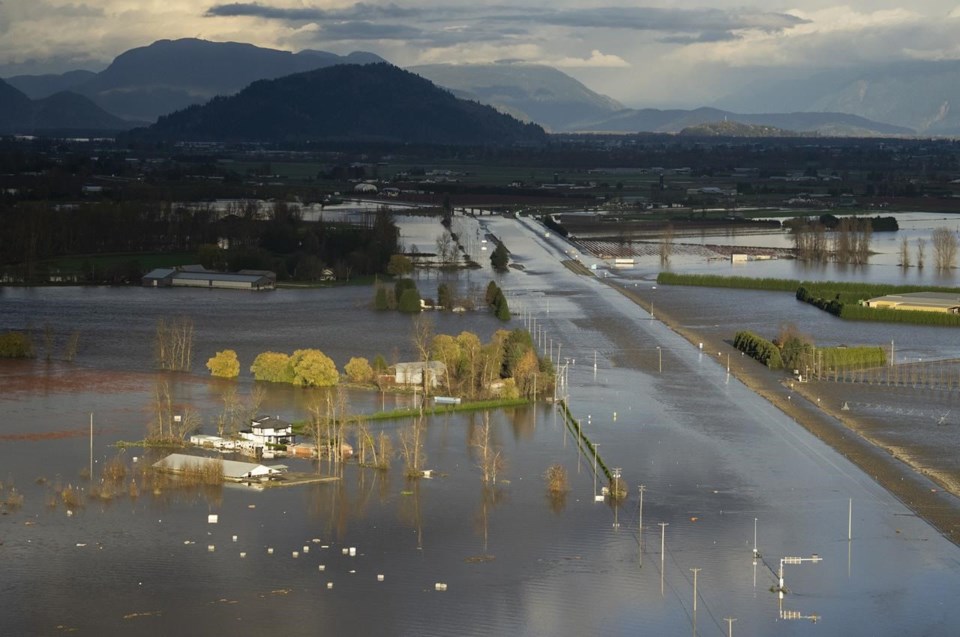VANCOUVER — The latest round of storms to hit southern British Columbia reinforce the need for various levels of government to work together when it comes to flood management, says the mayor of Abbotsford.
A series of atmospheric rivers was forecast to wash over British Columbia's south coast, bringing up to 15 centimetres of rain that won't relent until Thursday, Environment Canada said Tuesday.
Rainfall warnings covered western Vancouver Island and the Sunshine Coast and southern coast, including Metro Vancouver and the Fraser Valley. The storm's first torrent on Tuesday was forecast to be followed by a second intense gush Wednesday and a final blast Thursday, said the weather office.
The latest storm was forecast as the B.C. government extended the provincial state of emergency that was declared after storms in November washed away highways, flooded communities and killed five people.
In a statement, Public Safety Minister Mike Farnworth said the state of emergency is being extended until next Tuesday as work continues to repair damaged highways.
Abbotsford's Sumas Prairie region, a prime farming location, was devastated by November's storms and the city remains under its own a state of emergency.
Mayor Henry Braun said the city is as ready as it can be for the rain.
“I just hope it won’t be worse,” he said.
Braun said his largest concerns are for Clayburn Village and the Nooksack River, which runs on the U.S. side of the border.
"The Nooksack needs dredging, just like the Fraser River needs dredging," he said, adding that the work has been needed since the 1970s.
Braun said the damage from November's storms combined with the latest round of weather signals the need for closer co-ordination between all levels of government for disaster and flood management.
"We've got to solve this. This has been going on for 30-plus years. We know it has to be done and if nothing else, this last year’s flooding highlights the importance of senior levels of government making long-term investments in redoing the infrastructure that’s already in our communities."
Abbotsford issued a warning Tuesday to residents in low-lying areas to prepare for the potential of localized flooding.
Forecasters said warmer temperatures would also lead to melting snowpacks as well as swelling waterways.
Meteorologist Bobby Sekhon said he wouldn’t describe the latest storm as “extreme.”
“It’s all about the combination of things. What we’re dealing with here is we had a very snowy and cold stretch for the last three or four weeks … and the concern, as always, is as we get heavy rain and melting temperatures, that can create a recipe for flooding,” Sekhon said.
Sekhon said Environment and Climate Change Canada is continuing to work on a ranking system for atmospheric rivers.
Emergency Management BC urged homeowners to prepare for potential floods by clearing storm drains, cleaning gutters and confirming where sandbags can be picked up from local governments.
The River Forecast Centre posted high streamflow advisories for rivers and creeks across all of Vancouver Island and the south coast.
Dave Campbell, the head of the centre, said in an interview that the forecast is common for this time of year, but residents need to be aware of the weather conditions.
There is potential for roads to be washed out and drivers need to take care if they have to travel, he said.
Avalanche Canada raised the risk of a slide on Vancouver Island, the south coast and Sea-to-Sky mountains to high, meaning very dangerous avalanche conditions exist.
"Wait out this storm," said a post on the Avalanche Canada website, advising that travel on southern coastal mountains was not recommended until conditions improve.
"Expect loose, wet avalanches to be widespread at all elevations, and easily triggered," the site said.
This report by The Canadian Press was first published Jan. 11, 2022.
Nick Wells, The Canadian Press



